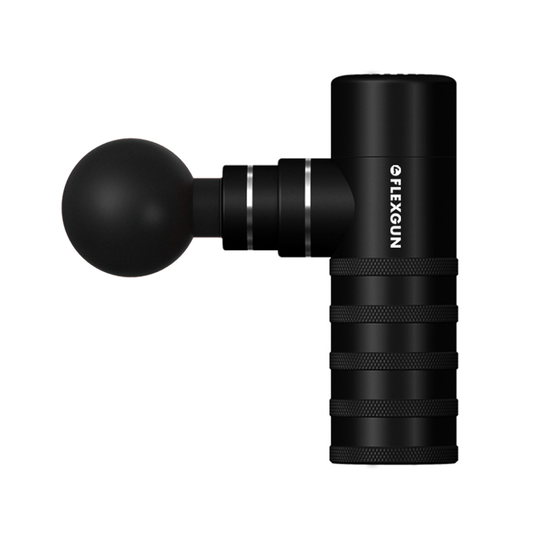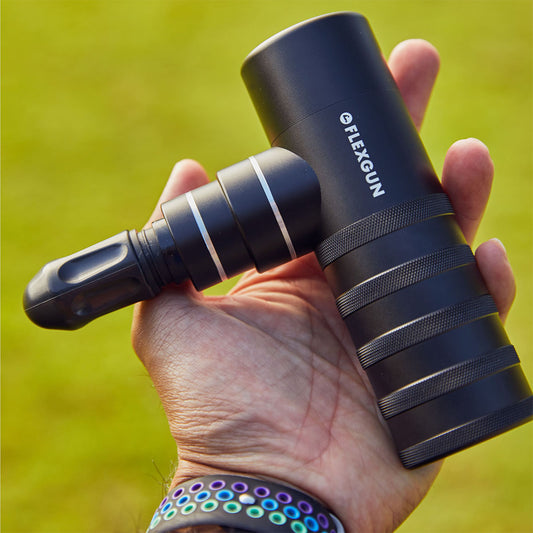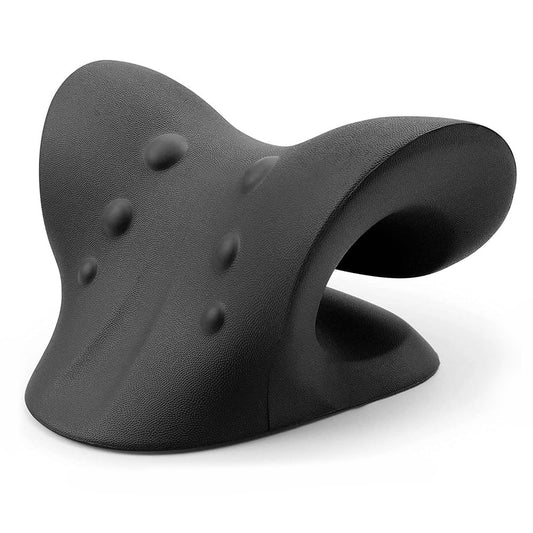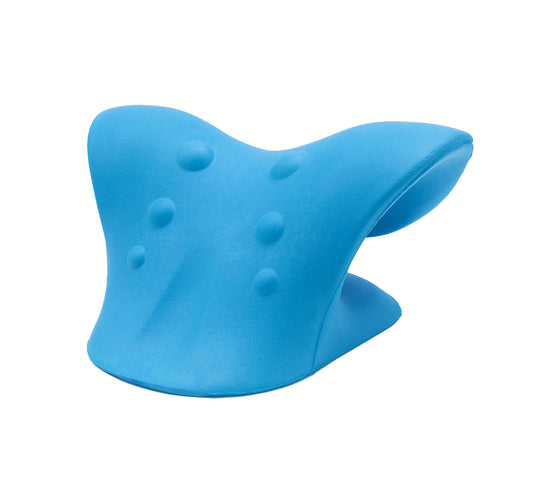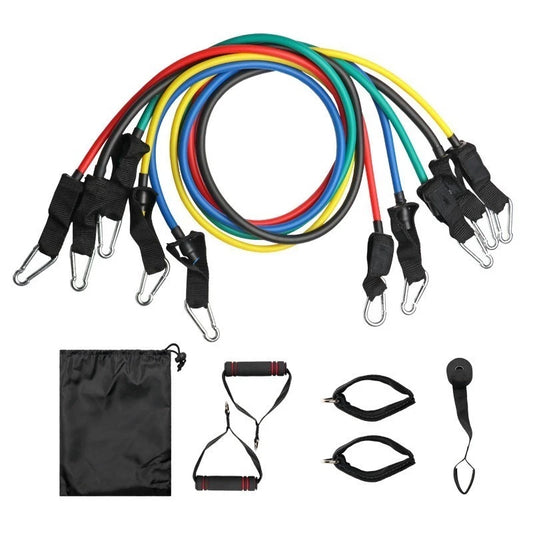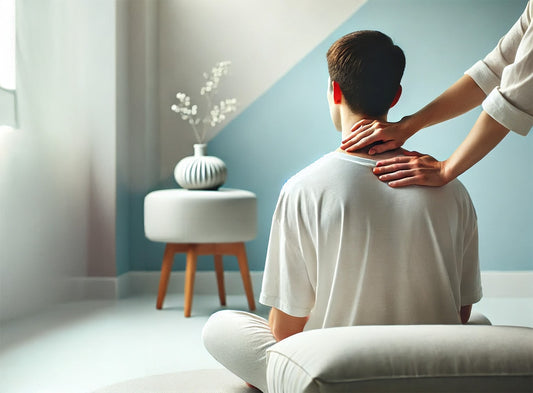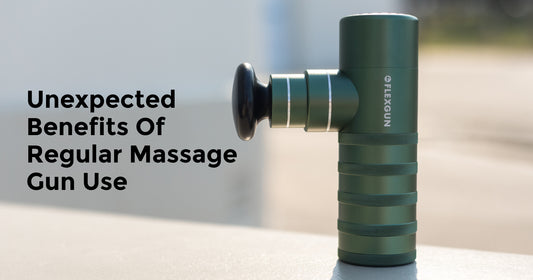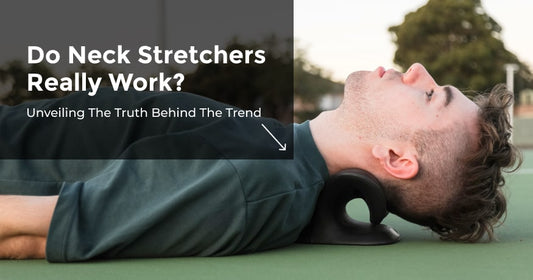Cervical traction is a non-invasive treatment that can help alleviate neck pain, improve mobility, and promote overall spinal health. In this blog, we will explore the benefits of cervical traction, how it works, and exercises to try. We will also discuss the safety of cervical traction and who should avoid it.
What is Cervical Traction?
Cervical traction is a therapeutic technique that involves stretching the neck to relieve pressure on the spinal discs, joints, and nerves. It can be performed manually by a physical therapist or with the help of a cervical traction device.
How Does Cervical Traction Work?
Cervical traction works by creating tension that pulls the head up and away from the shoulders, creating space between the vertebrae. This helps to improve blood circulation, reduce inflammation, and promote healing.
What Are the Benefits of Cervical Traction?
Alleviates Neck Pain and Stiffness
One of the primary benefits of cervical traction is its ability to alleviate neck pain and stiffness. By gently stretching the neck muscles and ligaments, cervical traction can help to relieve pressure on the spinal discs and nerves, reducing pain and discomfort.
Improves Mobility and Flexibility
Cervical traction can also help to improve mobility and flexibility in the neck. By increasing the space between the vertebrae, cervical traction allows for greater movement and range of motion in the neck, making it easier to perform daily activities and maintain proper posture.
Reduces Pressure on the Spinal Discs and Nerves
By creating space between the vertebrae, cervical traction helps to reduce pressure on the spinal discs and nerves. This can help to alleviate pain and discomfort caused by conditions such as herniated discs, pinched nerves, and degenerative disc disease.
Promotes Overall Spinal Health
In addition to providing relief from neck pain and stiffness, cervical traction can also help to promote overall spinal health. By improving blood circulation and reducing inflammation, cervical traction can help to support the healing process and prevent further damage to the spine.
Relieves Tension Headaches
Tension headaches are often caused by muscle tension and tightness in the neck and shoulders. Cervical traction can help to alleviate this tension, reducing the frequency and severity of tension headaches.
Improves Posture
Poor posture can contribute to neck pain and stiffness, as well as other spinal issues. By improving mobility and flexibility in the neck, cervical traction can help to correct poor posture and promote better spinal alignment.
How to Perform Cervical Traction Exercises?
There are several ways to perform cervical traction exercises, including manual cervical traction and using a cervical traction device.
Manual Cervical Traction
Manual cervical traction is performed by a physical therapist who uses their hands to gently stretch the neck and relieve pressure on the spinal discs and nerves. This type of cervical traction is typically performed in a clinical setting and may be combined with other therapies such as massage and stretching exercises.
Cervical Traction Device
A cervical traction device can be used at home to perform cervical traction exercises. These devices come in various designs, including over-the-door models and inflatable collars. It is important to follow the manufacturer's instructions and consult with a healthcare professional before using a cervical traction device.
Safety of Cervical Traction
Cervical traction is generally safe when performed correctly and under the guidance of a healthcare professional. However, it is not recommended for everyone. People with certain medical conditions such as tumors, malignancy, infection of the spine, inflammation of the spine, or rheumatoid arthritis should avoid cervical traction. Pregnant women and people with fractures or recent sprains or strains in the neck less than two weeks old should also avoid cervical traction.
It is important to consult with a healthcare professional before performing cervical traction exercises, especially if you have any pre-existing medical conditions or concerns. Always follow the manufacturer's instructions when using a cervical traction device and seek professional guidance if you are unsure about proper usage.
In the next section, we will discuss more about the different types of cervical traction devices available and how to choose the right one for your needs.
Types of Cervical Traction Devices
There are several types of cervical traction devices available on the market, each with its own unique features and benefits. In this section, we will discuss some of the most popular types of devices and how to choose the right one for your needs.

Over-the-Door Cervical Traction Devices
Over-the-door cervical traction devices are a popular option for at-home use. These devices consist of a harness that attaches to the head and neck, a pulley system, and a weight or tension system that hangs over the top of a door. The user adjusts the tension by adding or removing weight, allowing for a customized level of traction.
Pros:
- Affordable
- Easy to set up and use
- Adjustable tension levels
Cons:
- Limited range of motion compared to other devices
- May not be suitable for all door types

Inflatable Cervical Traction Collars
Inflatable cervical traction collars are another option for at-home cervical traction. These devices consist of an inflatable collar that wraps around the neck and is secured with Velcro straps. As the collar inflates, it gently lifts the head away from the shoulders, providing traction to the cervical spine.
Pros:
- Portable and lightweight
- Easy to use
- Adjustable inflation levels
Cons:
- May not provide as much traction as other devices
- Some users may find the collar uncomfortable

Supine Cervical Traction Devices
Supine cervical traction devices are designed for use while lying down, typically on a bed or floor. These devices features a unique design that supports the head and neck, allowing for gentle stretching to provide optimal traction to the cervical spine.
Pros:
- Comfortable and easy to use
- Provides a greater range of motion than over-the-door devices
- Ergonomically designed to fit the natural curve of the neck
- Portable and lightweight, making it ideal for travel or use in multiple locations
- Can be used while sitting or lying down, offering flexibility in positioning
- Made from soft, skin-friendly materials for added comfort during use
Cons:
- Some users may prefer a more rigid support structure for their neck
How to Choose the Right Cervical Traction Device
When choosing a cervical traction device, consider the following factors:
-
Comfort: Look for a device that is comfortable to wear and use, as this will make it easier to perform cervical traction exercises regularly.
-
Ease of Use: Consider how easy the device is to set up, adjust, and use. Some devices may require assistance from another person, while others can be used independently.
-
Portability: If you plan to travel or use your cervical traction device in multiple locations, look for a lightweight and portable option.
- Budget: Determine your budget and compare the features and benefits of various devices within your price range.
Consult with a healthcare professional before purchasing a cervical traction device, as they can provide guidance on the most appropriate type of device for your specific needs and condition.
Tips for Using a Cervical Traction Device
To get the most out of your cervical traction device, follow these tips:
-
Start Slowly: Begin with a low level of tension and gradually increase the intensity as tolerated. This will help to prevent injury and ensure a comfortable experience.
-
Maintain Proper Posture: Ensure that your head, neck, and spine are properly aligned during cervical traction exercises. This will help to maximise the effectiveness of the treatment and prevent strain on other areas of the body.
-
Follow a Consistent Routine: Perform cervical traction exercises regularly, ideally on a daily basis, to achieve the best results. Consistency is key when it comes to improving spinal health and alleviating neck pain.
-
Listen to Your Body: Pay attention to any discomfort or pain during cervical traction exercises and adjust the tension or duration accordingly. If pain persists or worsens, consult with a healthcare professional.
-
Combine with Other Therapies: For optimal results, consider combining cervical traction with other therapies such as massage, stretching exercises, and heat or cold therapy.
In the final section of this blog, we will discuss some common questions and concerns about cervical traction and provide additional resources for further information.
Frequently Asked Questions and Additional Resources
Conclusion
Cervical traction is a safe and effective treatment for neck pain and other spinal conditions. It can be performed manually by a physical therapist or with the help of a cervical traction device. By incorporating cervical traction exercises into your daily routine, you can improve your spinal health, alleviate neck pain, and improve your overall quality of life.
It is important to consult with a healthcare professional before performing cervical traction exercises and to follow the manufacturer's instructions when using a cervical traction device. Always listen to your body and adjust the intensity and duration of your cervical traction sessions as needed to ensure a comfortable and effective experience.
With the right approach and consistent practice, cervical traction can provide significant benefits for those suffering from neck pain, stiffness, and other spinal issues.
Additional Resources
For more information on cervical traction and related topics, consider exploring the following resources:
- Pettibon System: The Benefits of Cervical Traction
- Healthline: Cervical Traction
- Neck Hammock: Cervical Traction Benefits
- Therapy and Pilates: Cervical Traction Devices
- Advanced Chiropractic: Will Cervical Traction Ease Your Neck Pain?
- Journal of Orthopaedic & Sports Physical Therapy: The Effectiveness of Cervical Traction

![[Neck Stretcher] Benefits of Cervical traction](http://www.flexgun.com.au/cdn/shop/articles/Supine_cervical_traction-min.jpg?v=1699122236&width=1100)
